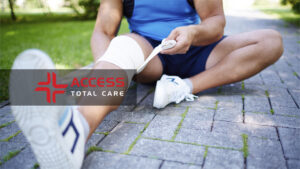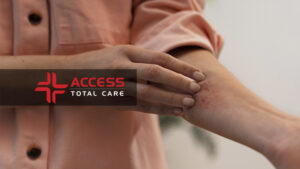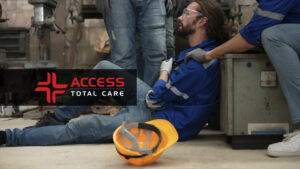Every athlete, whether an amateur or professional, knows the exhilaration that comes with sports. The rush of adrenaline, the thrill of competition, and the joy of victory make all the hard work worthwhile. However, sports also come with their fair share of risks. From sprained ankles to broken bones, sports injuries are an unfortunate part of the game. So, when should you seek urgent care for a sports injury?
Understanding Urgent Care
First, let’s clarify what urgent care is. Urgent care centers, also known as walk-in clinics or immediate care facilities, provide medical attention for non-life-threatening conditions that need prompt attention.
They bridge the gap between primary care doctors and emergency rooms, offering a convenient and cost-effective alternative for many injuries and illnesses. Unlike a scheduled visit to your regular doctor, you don’t need an appointment to go to an urgent care center. This makes them ideal for sudden sports injuries.
When to Choose Urgent Care Over the ER
Determining whether to head to urgent care or the emergency room can be tricky. Here are some guidelines to help you decide.
Minor Fractures and Sprains
If you’ve twisted your ankle during a game and it’s swollen, but you can still put some weight on it, urgent care is the right choice. Urgent care centers are equipped with X-ray machines and can diagnose and treat minor fractures and sprains.
They can also provide splints, braces, and pain management. However, if the bone is protruding through the skin or the limb looks deformed, head straight to the emergency room.
Cuts and Abrasions
Minor cuts and abrasions are common in many sports. If you have a deep cut that might need stitches but isn’t bleeding profusely, urgent care can handle it.
Walk-in clinics can clean and stitch wounds, providing you with the necessary care to prevent infection and promote healing. But, if the bleeding is uncontrollable or the cut is on a sensitive area like the face, the ER is a safer bet.
Concussions
You should always take head injuries seriously, no matter how minor you think they might be. If you take a blow to the head and are experiencing symptoms like a headache, dizziness, or nausea, it’s crucial to get medical attention immediately.
Urgent care centers can evaluate mild concussions and provide initial treatment. However, if you’ve lost consciousness, are vomiting repeatedly, or are experiencing severe confusion, you need to go to the emergency room. These could be signs of a more severe brain injury.
Muscle Strains and Tears
Pulled muscles and tendon injuries can be very painful. If you’ve strained a muscle and it’s causing significant discomfort, urgent care can help. These clinics can assess the injury, recommend rest and physical therapy, and prescribe pain relief if necessary.
On the other hand, if you suspect a complete muscle or tendon tear, especially if accompanied by a popping sound or immediate, severe pain, the emergency room is more appropriate for immediate and comprehensive care.
Back Pain
Back injuries are common in sports like football, gymnastics, and weightlifting. If you experience sudden back pain that’s severe but not accompanied by numbness, weakness, or loss of bladder control, urgent care is a good option.
They can provide an initial assessment, pain management, and recommendations for follow-up care. However, if you have any of the more severe symptoms mentioned, these could indicate spinal cord injury, and you should go to the ER.
Benefits of Urgent Care for Sports Injuries
Sometimes, going to the emergency room is the smarter move, but if you have the choice, urgent care is a great option. Opting for urgent care when appropriate comes with several advantages. Here’s why athletes often prefer this route.
Shorter Wait Times
Emergency rooms prioritize patients based on the severity of their condition. This means you could wait a long time if your injury isn’t life-threatening. You might have a sprained ankle, and another person could come in bleeding a lot.
Even if you got there first, compared to that other patient, your injury isn’t as serious, so you’ll be waiting longer. Urgent care centers, on the other hand, typically have shorter wait times, allowing you to get treated more quickly and get back on your feet sooner.
Cost-Effective Care
Urgent care visits generally cost less than a trip to the emergency room. For non-life-threatening injuries, this can mean significant savings, especially for those without insurance or with high deductibles. Most urgent care centers accept various insurance plans, making them a more affordable option.
Convenience
Many urgent care centers offer extended hours, including evenings and weekends. This flexibility is particularly beneficial for athletes who might get an injury outside of regular office hours. Being able to walk in without an appointment is another major convenience, ensuring you get timely care when you need it most.
Comprehensive Services
Urgent care centers are well-equipped to handle a wide range of injuries. From diagnostic tools like X-rays to treatments like splints, stitches, and medication, these clinics provide comprehensive care for less severe injuries that need urgent attention. They can also offer referrals for specialized follow-up treatment if necessary, ensuring continuity of care.
When to Stick with Home Remedies
Not all sports injuries require professional medical attention. While sometimes it’s better to be safe than sorry, it’s not always worth it to head to urgent care. It’s important to note that if any home remedies don’t work or you notice them worsening quickly, you’ll want to seek medical attention. Here are some scenarios where home care might be sufficient.
Minor Bruises and Contusions
Home care is usually enough if you’ve taken a minor knock that’s left you with a bruise. Rest, ice, compression, and elevation (the R.I.C.E. method) can help reduce swelling and alleviate pain. Over-the-counter pain relievers can also be effective.
Mild Strains
For mild muscle strains, rest and gentle stretching can promote healing. Avoid activities that aggravate the injury, and consider using ice packs to reduce swelling. Heat packs can also help relax tight muscles once the initial swelling has gone down.
Minor Blisters
Blisters from friction, like those on your feet from running, often heal on their own. Keep the area clean and covered to prevent infection. You can also use moleskin or blister pads to protect the area and reduce discomfort during activity. If you notice signs of infection, clean the wound and head to urgent care for more in-depth care.
Soreness and Fatigue
General muscle soreness after intense activity is common and usually resolves with rest. Hydration, proper nutrition, and gentle activities like yoga or swimming can aid recovery. Over-the-counter anti-inflammatory medications can help if soreness is significant.
Visit an Urgent Care for Sports Injuries
Sports injuries are an inevitable part of an active lifestyle, but knowing when and where to seek medical help can make a significant difference in your recovery. Urgent care centers provide a valuable service for many non-life-threatening injuries, offering a convenient and cost-effective alternative to the emergency room.
By understanding the capabilities of urgent care and the types of injuries they can treat, athletes can ensure they get the appropriate care swiftly, minimizing downtime and promoting faster healing. So, next time you face a sports injury, remember that urgent care might just be your best play.




















